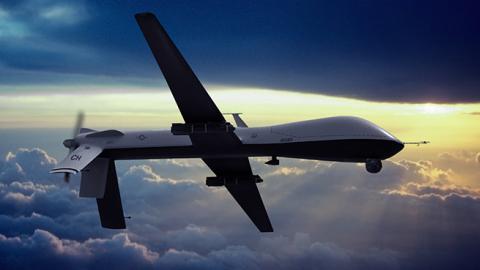p(firstLetter). he furor over President Trump’s explosive performance at the latest NATO summit — and his demand that America’s fellow NATO members not only start spending the obligatory 2 percent of their GDP on defense but go further and spend 4 percent — is obscuring two important issues relating to future defense spending, whether it’s by our NATO allies or by us.
First, whether it’s 2 or 4 percent of GDP (and only eight out of 29 NATO members are expected to hit that lower number this year), what will our NATO partners be spending those extra euros (or pounds or zlotys) on?
For example, if it’s just on raising salaries and pensions and benefits, that’s far from satisfactory from the point of view of military readiness or capacity. Unfortunately, on that score the United States has been just as guilty as anyone in NATO. Today more than a third of our defense budget goes to human-resource costs instead of to weapons systems — almost one-half if you include costs for civilian personnel. Indeed, since 2001, military pay and benefits have increased by 85 percent — the single fastest-growing item in our baseline budget for defense.
As it turns out, among NATO members, we’re hardly alone. One-third of Britain’s defense budget, for instance, goes to personnel costs, while less than a quarter goes to actual defense equipment — what most people think of when they think of defense spending.
How much do we spend on defense equipment? Equipment for all our armed forces — including the Air Force, Navy, Army, Marines, and Coast Guard — takes up 28 percent of the annual Defense Department budget. According to NATO’s own report (“Defence Expenditure of NATO Countries (2011–2018)”), America’s expenditure on equipment is on the high side for NATO members. Some spend more. Luxemburg, for example, will devote a whopping 41 percent, and Rumania almost 35 percent, to defense equipment in 2018, although, admittedly, neither ranks as a military behemoth. Equipment spending for Latvia, Turkey, Bulgaria, and Lithuania is expected to hover around 30 percent for each.
Defense-equipment spending for the rest, however, including many of our most important allies, quickly falls to below one-quarter of their annual budgets, with the U.K. at 21 percent, Germany at 14 percent, Canada at 17 percent, the Czech Republic at 12 percent, and Belgium — where NATO is headquartered — at a measly 5 percent.
By contrast, Russia spends 50–60 percent of its annual defense budget on equipment and capabilities.
Unfortunately, this raises a second and even more pertinent question obscured by the current obsession over what percentage of GDP is being spent on defense. What kind of equipment should our NATO partners be buying? The danger is that too much of this additional spending will go to legacy systems (helicopters, tanks, artillery, and expensive aircraft such as the F-35 Joint Strike Fighter) and not to next-generation systems such as unmanned aerial and undersea vehicles, robotics, AI, directed energy, and cyber, as well as support systems like 3-D printing and advanced wireless. These systems, especially unmanned systems, will be needed sooner rather than later, to deal with threats posed by non-state actors and by Russia and China, which are masters of non-linear or hybrid warfare. This sort of warfare combines social media and cyberattacks with paramilitary operations that conventional military assets can’t identify, let alone respond to in a meaningful way.
In the long run, the next-generation systems will be cheaper because these technologies follow Moore’s Law, which postulated more than 50 years ago that advanced technologies like the microchip would dramatically increase in power, and decrease in relative cost, at an exponential pace. Moore’s Law has held true for everything commercial or defense-related, from microchips to personal computers to supercomputers.
These next-generation technologies also reduce the need for more human personnel to staff the systems or even risk their lives, which would also mean lower costs in human resources.
Right now, every military establishment around the world is facing a major challenge as it adjusts to the new battle space these advanced technologies will create and dominate — including in space itself. The weapons systems that determine who wins and who loses wars in 2030 will be very different from the systems NATO currently deploys. In addition, the defense companies that develop and build those systems will bear little resemblance to defense companies today, whether they’re American or European. It’s time our military and defense leaders acknowledge these facts and start dealing with them rather than getting trapped in a sterile debate over GDP percentages.
The good news is that President Trump is trying to get our NATO partners to spend more on their defense. But getting NATO to spend more should also be an opportunity to get us all — the U.S. included — to think more about how to best develop and deploy the defense systems of the future.















